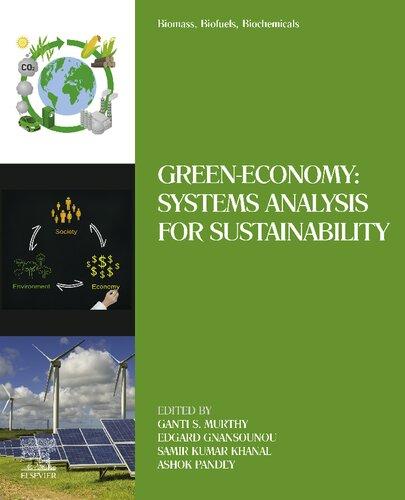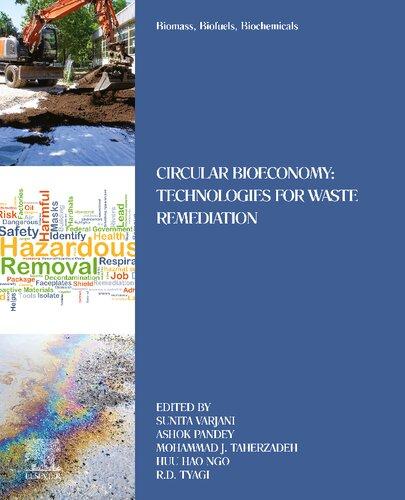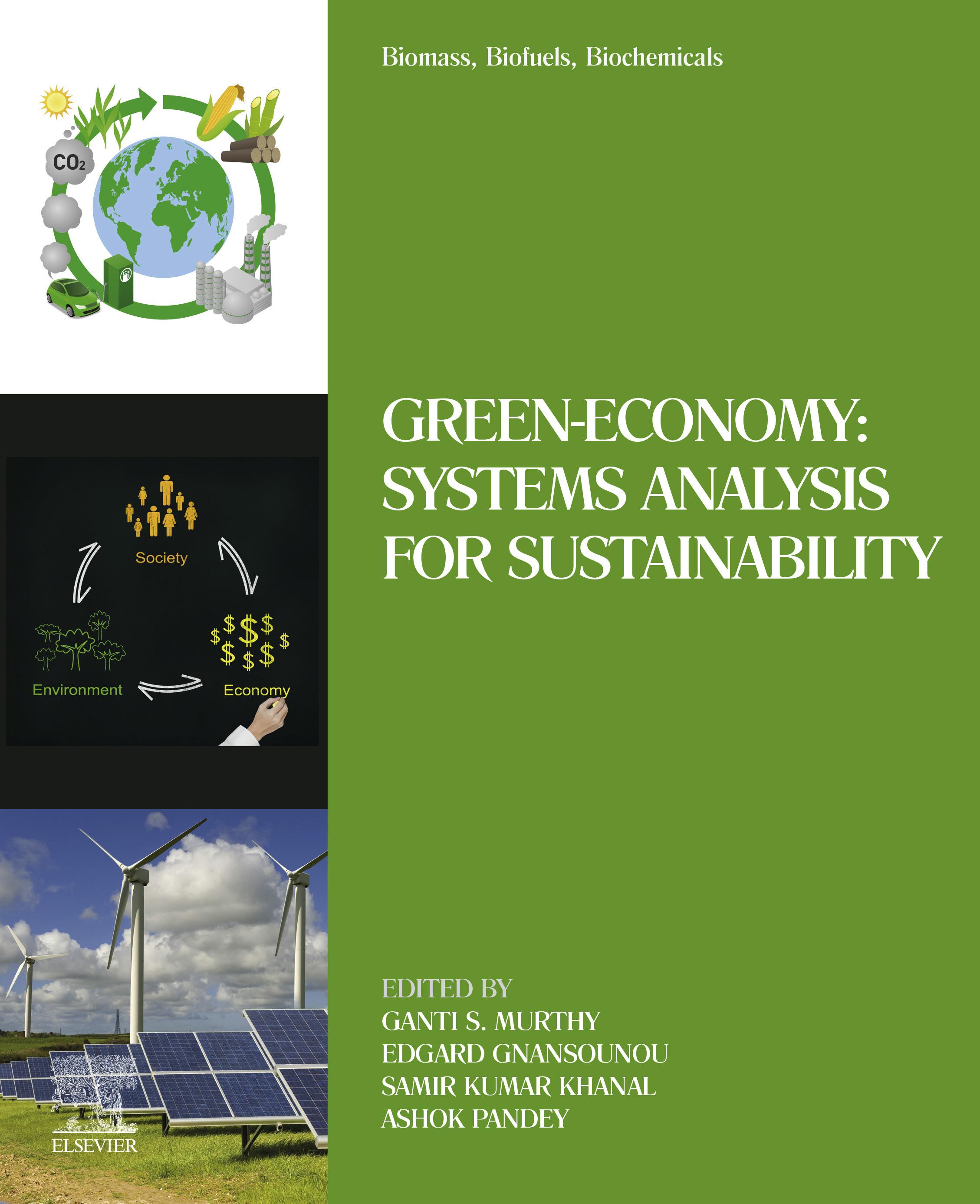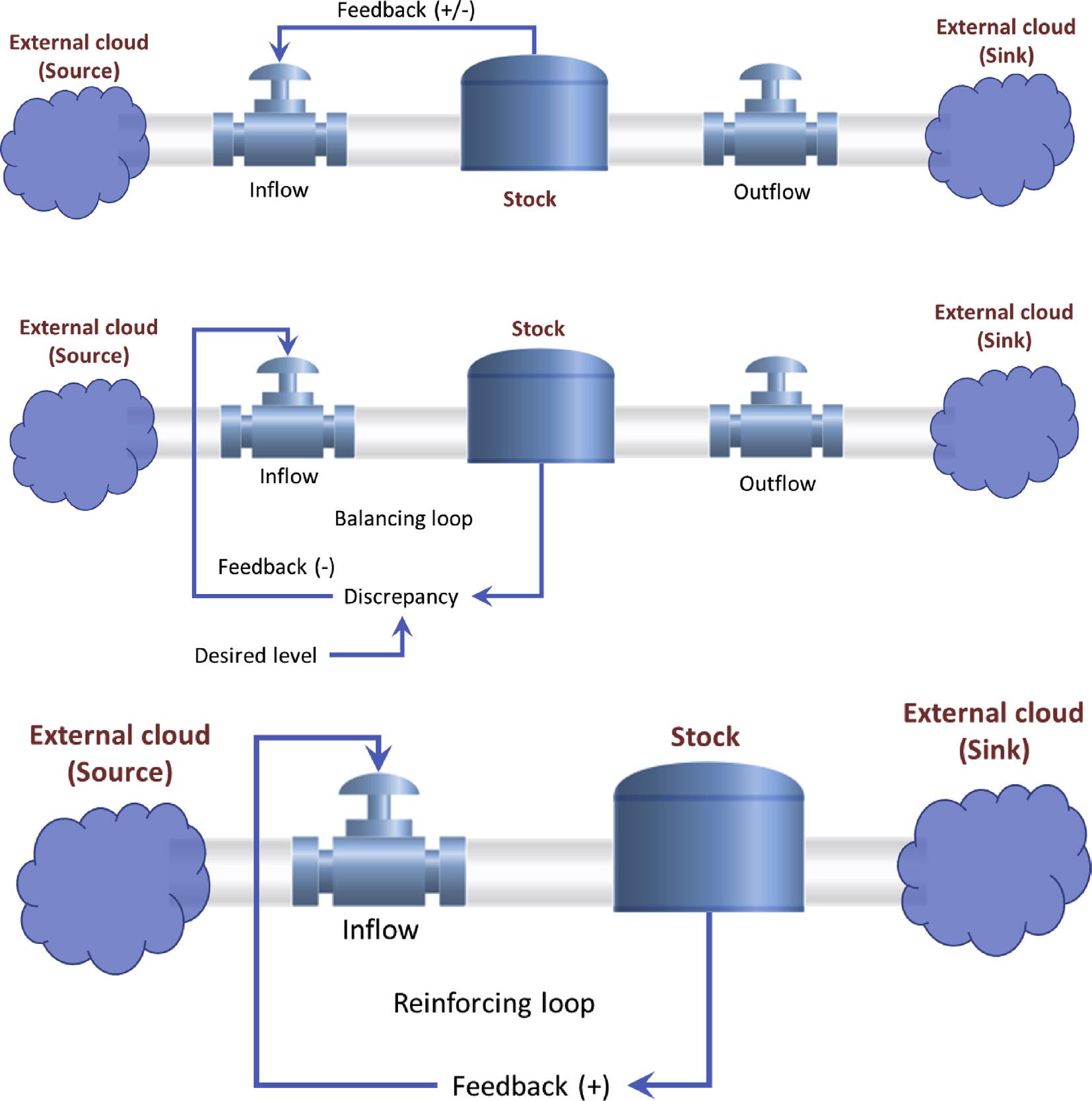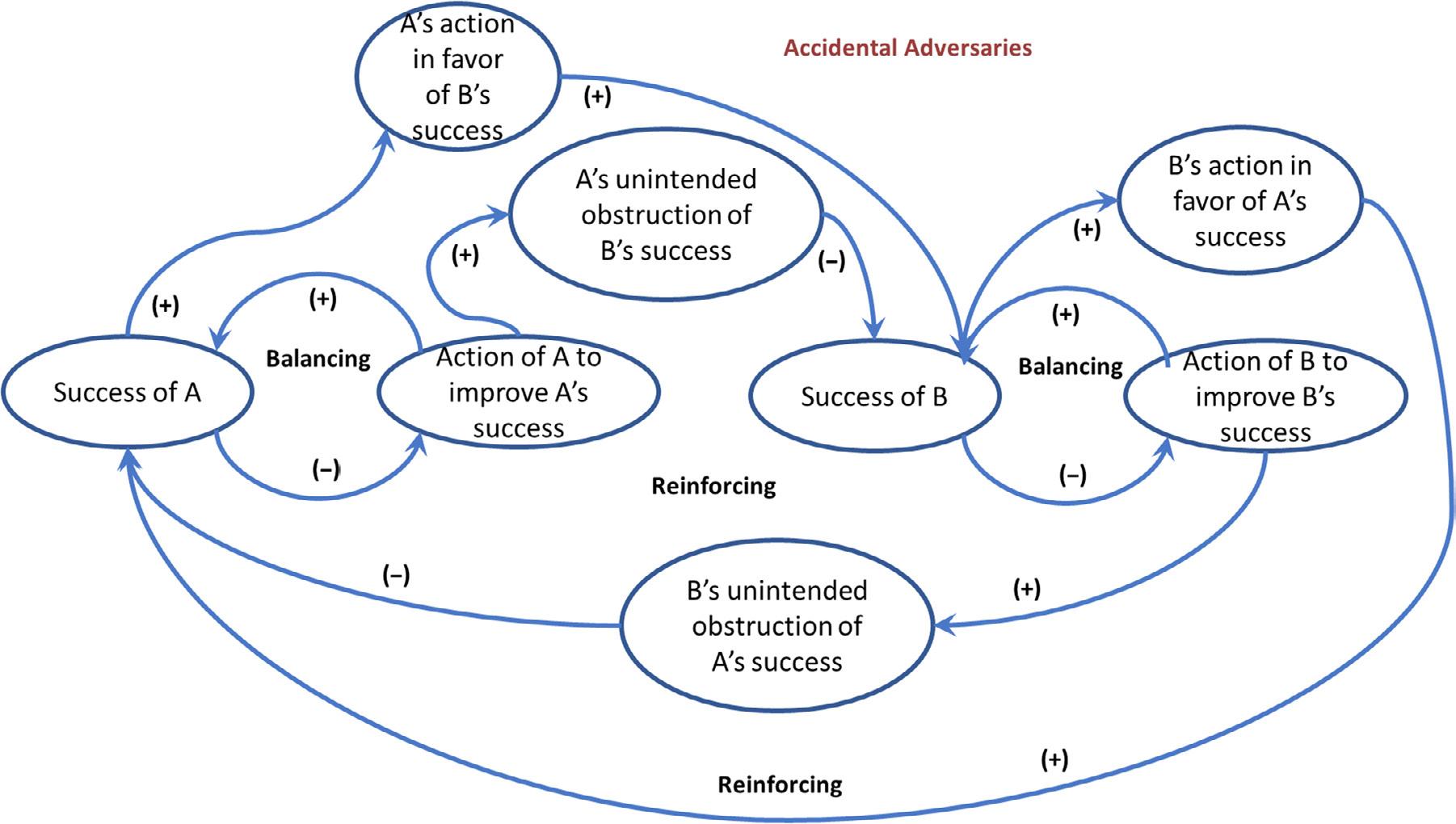https://ebookmass.com/product/biomass-biofuels-biochemicalsgreen-economy-systems-analysis-for-sustainability-ganti-smurthy/
Instant digital products (PDF, ePub, MOBI) ready for you
Download now and discover formats that fit your needs...
Biomass, Biofuels, Biochemicals – Biochemicals and Materials Production From Sustainable Biomass Resources Hu Li
https://ebookmass.com/product/biomass-biofuels-biochemicalsbiochemicals-and-materials-production-from-sustainable-biomassresources-hu-li/ ebookmass.com
Biomass, Biofuels, Biochemicals: Circular Bioeconomy: Technologies for Waste Remediation Sunita Varjani
https://ebookmass.com/product/biomass-biofuels-biochemicals-circularbioeconomy-technologies-for-waste-remediation-sunita-varjani/
ebookmass.com
Biomass, Biofuels, Biochemicals : Microbial Fermentation of Biowastes Le Zhang
https://ebookmass.com/product/biomass-biofuels-biochemicals-microbialfermentation-of-biowastes-le-zhang/
ebookmass.com
Yes & I Love You: Roni Loren
https://ebookmass.com/product/yes-i-love-you-roni-loren-3/
ebookmass.com
Pluralism and World Order: Theoretical Perspectives and Policy Challenges Feng Zhang
https://ebookmass.com/product/pluralism-and-world-order-theoreticalperspectives-and-policy-challenges-feng-zhang/
ebookmass.com
PSYCHIC EMPATH: 5 BOOKS IN 1: Reiki for Beginners, Kundalini, Chakra Healing, Buddhism, Psychic development, Third eye, Deep Sleep Techniques, Awareness therapy, Empath, and Yoga Sutras Academy
https://ebookmass.com/product/psychic-empath-5-books-in-1-reiki-forbeginners-kundalini-chakra-healing-buddhism-psychic-development-thirdeye-deep-sleep-techniques-awareness-therapy-empath-and-yoga-sutrasacademy/ ebookmass.com
Dirty : Dirty Series Collection, Books 1-7 V.T. Do
https://ebookmass.com/product/dirty-dirty-series-collectionbooks-1-7-v-t-do/
ebookmass.com
Asymmetric Organo-Metal Catalysis: Concepts, Principles, and Applications Liu-Zhu Gong
https://ebookmass.com/product/asymmetric-organo-metal-catalysisconcepts-principles-and-applications-liu-zhu-gong/
ebookmass.com
Beautiful Delusions: A Why Choose Academy Romance Maddison Cole
https://ebookmass.com/product/beautiful-delusions-a-why-chooseacademy-romance-maddison-cole/
ebookmass.com
Fabrication of heterostructured β-Bi2O3-TiO2 nanotube array composite film for photoelectrochemical cathodic protection applications Zi-Chao Guan & Hai-Peng Wang & Xia Wang & Juan Hu & Rong-Gui Du https://ebookmass.com/product/fabrication-ofheterostructured-%ce%b2-bi2o3-tio2-nanotube-array-composite-film-forphotoelectrochemical-cathodic-protection-applications-zi-chao-guanhai-peng-wang-xia-wang-juan-hu-rong-gui-d/ ebookmass.com
BIOMASS, BIOFUELS, BIOCHEMICALS
Green-economy: SyStemS
AnAlySiS for SuStAinAbility
Edited
by
GANTI S. MURTHY
Biological and Ecological Engineering, Oregon State University, Corvallis, OR, United States; Biosciences and Biomedical Engineering, Indian Institute of Technology, Indore, India
EDGARD GNANSOUNOU
Ecole Polytechnique Fédérale de Lausanne (EPFL), School of Environment, Civil Engineering, and Architecture, Institute of Civil Engineering, Bioenergy and Energy Planning Research Group, Lausanne, Switzerland
SAMIR KUMAR KHANAL
Department of Molecular Biosciences & Bioengineering, University of Hawai’i at Manoa, Honolulu, USA; Department of Biology, Hong Kong Baptist University, Kowloon Tong, Hong Kong
ASHOK PANDEY
Centre for Innovation and Translational Research, CSIR-Indian Institute of Toxicology Research, Lucknow, India
Elsevier
Radarweg 29, PO Box 211, 1000 AE Amsterdam, Netherlands
The Boulevard, Langford Lane, Kidlington, Oxford OX5 1GB, United Kingdom 50 Hampshire Street, 5th Floor, Cambridge, MA 02139, United States
Copyright © 2022 Elsevier BV. All rights reserved.
No part of this publication may be reproduced or transmitted in any form or by any means, electronic or mechanical, including photocopying, recording, or any information storage and retrieval system, without permission in writing from the publisher. Details on how to seek permission, further information about the Publisher’s permissions policies and our arrangements with organizations such as the Copyright Clearance Center and the Copyright Licensing Agency, can be found at our website: www.elsevier.com/permissions
This book and the individual contributions contained in it are protected under copyright by the Publisher (other than as may be noted herein).
Notices
Knowledge and best practice in this field are constantly changing. As new research and experience broaden our understanding, changes in research methods, professional practices, or medical treatment may become necessary.
Practitioners and researchers must always rely on their own experience and knowledge in evaluating and using any information, methods, compounds, or experiments described herein. In using such information or methods they should be mindful of their own safety and the safety of others, including parties for whom they have a professional responsibility.
To the fullest extent of the law, neither the Publisher nor the authors, contributors, or editors, assume any liability for any injury and/or damage to persons or property as a matter of products liability, negligence or otherwise, or from any use or operation of any methods, products, instructions, or ideas contained in the material herein.
British Library
Cataloguing-in-Publication Data
A catalogue record for this book is available from the British Library
Library of Congress
Cataloging-in-Publication Data
A catalog record for this book is available from the Library of Congress
ISBN: 978-0-12-819242-9
For Information on all Elsevier publications visit our website at https://www.elsevier.com/books-and-journals
Publisher: Susan Dennis
Acquisitions Editor: Kostas Marinakis
Editorial Project Manager: Andrea Dulberger
Production Project Manager: Joy Christel Neumarin Honest Thangiah
Cover Designer: Greg Harris
Typeset by Aptara, New Delhi, India
4.
7.
5.4
7.1
7.4
8.
Edgard
9.
Ganti
9.1
11.
12.3
12.4
12.5
12.6
13. A case study on integrated systems analysis for biomethane use
Sarath C. Gowd, Deepak Kumar, Karthik Rajendran
13.1
13.2
13.3
13.4
14. Alternative ammonia production processes and the use of renewables
Gal Hochman, Alan Goldman, Frank A. Felder
14.1
14.3
14.4
14.5
15.
Edgard Gnansounou, Bénédicte Nsalambi
15.1
16. Advanced biofuels for transportation in West Africa: Common referential state-based strategies
Edgard Gnansounou, Elia Ruiz Pachón
16.1
16.2
16.3
16.4
16.5
17. Semantic sustainability characterization of biorefineries: A logic-based model
Edgard Gnansounou, Catarina M. Alves, Elia Ruiz Pachón, Pavel Vaskan 17.1
17.2
18.
Ashish Manandhar, Seyed Hashem Mousavi-Avval, Jaden Tatum, Esha Shrestha, Parisa Nazemi, Ajay Shah
18.1
18.2
18.5
18.7
18.8
18.9
19.
Prasad Mandade, Edgard Gnansounou
19.1
19.2
19.4
Contributors
Catarina M. Alves
Ecole Polytechnique Fédérale de Lausanne (EPFL), School of Environment, Civil Engineering, and Architecture, Institute of Civil Engineering, Bioenergy and Energy Planning Research Group, Lausanne, Switzerland
Frank A. Felder
Center for Energy, Economic & Environmental Policy, Edward J. Bloustein School of Planning and Public Policy, Rutgers, The State University of New Jersey, New Brunswick, NJ, United States
Edgard Gnansounou
Ecole Polytechnique Fédérale de Lausanne (EPFL), School of Environment, Civil Engineering, and Architecture, Institute of Civil Engineering, Bioenergy and Energy Planning Research Group, Lausanne, Switzerland
Alan Goldman
Department of Chemistry and Chemical Biology, Rutgers, The State University of New Jersey, New Brunswick, NJ, United States
Sarath C. Gowd
Department of Environmental Science, SRM University-AP, Amaravati, India; School of Engineering and Applied Sciences, SRM University-AP, Amaravati, India
Gal Hochman
Department of Agriculture, Food & Resource Economics, Rutgers, The State University of New Jersey, New Brunswick, NJ, United States
Deepak Kumar
Department of Chemical Engineering, State University of New York College of Environmental Science and Forestry, Syracuse, NY, United States
Ashish Manandhar
Department of Food, Agricultural and Biological Engineering, The Ohio State University, Wooster, OH, United States
Prasad Mandade
Ecole Polytechnique Fédérale de Lausanne (EPFL), School of Environment, Civil Engineering, and Architecture, Institute of Civil Engineering, Bioenergy and Energy Planning Research, Group, Lausanne, Switzerland
Seyed Hashem Mousavi-Avval
Department of Food, Agricultural and Biological Engineering, The Ohio State University, Wooster, OH, United States
Ganti S. Murthy
Biological and Ecological Engineering, Oregon State University, Corvallis, OR, United States; Biosciences and Biomedical Engineering, Indian Institute of Technology, Indore, India
Parisa Nazemi
Department of Food, Agricultural and Biological Engineering, The Ohio State University, Wooster, OH, United States
Bénédicte Nsalambi
Ecole Polytechnique Fédérale de Lausanne (EPFL), School of Environment, Civil Engineering, and Architecture, Institute of Civil Engineering, Bioenergy, and Energy Planning Research Group, Lausanne, Switzerland
Elia Ruiz Pachón
Ecole Polytechnique Fédérale de Lausanne (EPFL), School of Environment, Civil Engineering, and Architecture, Institute of Civil Engineering, Bioenergy and Energy Planning Research Group, Lausanne, Switzerland
Ashok Pandey
Centre for Innovation and Translational Research, CSIR-Indian Institute of Toxicology Research, Lucknow, India
Kyle Proctor
Biological and Ecological Engineering, Oregon State University, Corvallis, OR, United States
Karthik Rajendran
Department of Environmental Science, SRM University-AP, Amaravati, India
Ajay Shah
Department of Food, Agricultural and Biological Engineering, The Ohio State University, Wooster, OH, United States
Esha Shrestha
Department of Food, Agricultural and Biological Engineering, The Ohio State University, Wooster, OH, United States
Jaden Tatum
Department of Food, Agricultural and Biological Engineering, The Ohio State University, Wooster, OH, United States
Pavel Vaskan
Ecole Polytechnique Fédérale de Lausanne (EPFL), School of Environment, Civil Engineering, and Architecture, Institute of Civil Engineering, Bioenergy and Energy Planning Research Group, Lausanne, Switzerland
Preface
Assessing the sustainability of green economy focusing on the emerging bioeconomy is a strong imperative and is an integral part of evaluating new technologies, processes/unit operations, products, and policies. It is increasingly recognized by academia, industry, government, and society that sustainability is multifaceted, and interdisciplinary systems analysis approaches are required to provide a comprehensive understanding.Various elements of sustainability analysis include assessing technical feasibility, economic viability, environmental impacts, resource sustainability, and social aspects of engineered systems. Emerging green, circular economy, and bioeconomy concepts incorporating biofuels and bioproducts, resource recovery from wastes/residues and utilization of technologies must have a long-term sustainability focus right from ideation.
Increasingly, there is a recognition that comprehensive sustainability analysis is necessary for evaluating technologies/processes or policies for the emerging green economy. While the scientific literature has many examples of qualitative analyses, quantitative, and objective analyses are sorely lacking. This is due to a lack of necessary interdisciplinary integration in curriculums across the world. Individual aspects such as techno-economic analysis, sustainability analysis, policy aspects are covered in various disciplines; however, there are currently no books that address the systems analysis for sustainability comprehensively. This book addresses this critical gap in the available books for students and practitioners of sustainability analysis at the systems level.
Systems analysis for sustainability is an emerging discipline where any technologies/ processes or policies are evaluated comprehensively for sustainability. Trifold sustainability metrics such as technical feasibility, economic viability, and environmental impacts are commonly used to assess sustainability. In addition to these metrics, it is important to consider resource sustainability, policies, and social aspects for evaluating the sustainability of any proposed alternative. This approach results in identifying possible pitfalls early in the process so that truly sustainable alternative technologies, products, and policies can be formulated. This book provides a theoretical background to perform such analyses. It demonstrates the application of these principles in practice with case studies carefully chosen from around the world to emerging technologies in the green economy.
The book is written with a focus on enabling interdisciplinary understanding and cross-fertilization of ideas and methods from various disciplines. The book could be adopted as a reference book for interdisciplinary courses in environmental, ecological, chemical, and mechanical engineering disciplines. It is organized into two main sections. The first nine chapters of the book lay a comprehensive foundation for systems analysis of bioeconomy, and various methods used for performing systems analysis of biofuels. The chapters focus on techno-economic analysis, environmental impact assessments,
environmental risk analysis, resource sustainability analysis, policy, and social aspects, and general logic-based methods. The last chapter in the first part of the book discusses the emerging concept of resilience and resilience thinking in the context of adaptations to climate change and bioeconomy. All the chapters in the first part of the book present theoretical foundations for each technique, quantitative, and qualitative frameworks, and worked examples to aid the student in a solid understanding of these techniques. The second part of the book presents case studies from around the world starting with chapters focused on the liquid biofuels and solar energy potential for the United States and India. Two chapters are devoted to assessing the potential for various biofuels production in the African continent. The integrated analysis of biomethane in Ireland, solid biofuels production in the United States, utilization of winery residues is other case studies included in the second part of the book. With the increasing fraction of grid electricity being produced from the renewable sources, there is a need to utilize the excess electricity produced. One chapter specifically focuses on the decentralized ammonia production using excess renewable electricity thus potentially displacing the fossil fuel-dependent Haber–Bosch process. It is hoped that the reader will find these case studies provide concrete examples of the application of system analysis techniques for bioeconomy.
Preparing this book was indeed a challenge. As with any challenging project, this is a product of a wonderful team of authors with excellent teamwork. We would like to thank all the authors for their participation in the preparation of the chapters. We would like to acknowledge the reviewers for their constructive comments. We thank the entire Elsevier team led by Dr. Marianakis Kostas, Senior Book Acquisition Editor and Andrea Dulberger, Editorial Project Manager for their patience, understanding, and help during this long and arduous process of completing this book. We sincerely hope this book will be useful to senior undergraduate students, beginning graduate students, and researchers.
Editors
Ganti S. Murthy
Edgard Gnansounou
Samir Kumar Khanal
Ashok Pandey
CHAPTER ONE
Systems analysis and its relevance for the sustainability transitions
Ganti S. Murthya,b, Ashok Pandeyc
aBiological and Ecological Engineering, Oregon State University, Corvallis, OR, United States, bBiosciences and Biomedical Engineering, Indian Institute of Technology, Indore, India, cCentre for Innovation and Translational Research, CSIR-Indian Institute of Toxicology Research, Lucknow, India
1.1 Introduction
We are living in Anthropocene, an era in which human activity is having a significant impact on the Earth’s ecosystems and geology. Realizing this simple fact requires a deep appreciation and acceptance of the tectonic changes in the biosphere and the planetary system that are taking place due to human activity [1]. Remarkable 1972 study, “limits to growth” pointed to the unsustainable trajectories of humanity [2]. Unfortunately, the trajectories remained largely in line with the business-as-usual case even after 30 years [3]. How does humanity extricate itself from the unsustainable trajectories of population growth, resource consumption, and over-exploitation of the natural resources from a bleak future and possible collapse? The thinking and action patterns that have resulted in the current situation must be changed. But how? As Einstein said, “We cannot solve our problems with the same thinking we used when we created them.” We cannot continue to use paradigms of unending growth in a world of inexhaustible resources. The reductionist and linear causal thinking that led to vast improvements in human conditions but put humanity on an unsustainable path cannot be the future. The thought and action patterns that worked when the population of the world was 500 million will not work in a world of 7. 5 billion that uses several times the per capita natural resources to sustain the way of life.
The human systems for producing food, managing our societies were built and have evolved over a long time. While much of the study of these human systems are mostly focused on the recent events, understanding how these systems were built, how they evolved over time is important for visualizing and planning for possible future sustainable scenarios. How the human societal, technological, economic, and political systems evolved contains important information regarding the elements, functions, and their relationships which is critical to understanding the various characteristics of the system. Simply observing the past and current events and using them to visualize the future is bound to fail as the systems we have evolved and their interactions with the natural systems are too complex to be modeled and require systems thinking.
DOI: https://doi.org/10.1016/B978-0-12-819242-9.00020-8
Richmond defined systems thinking as “Systems Thinking is the art and science of linking structure to performance, and performance to structure—often for purposes of changing structure (relationships) so as to improve performance” [4]. Systems thinking paradigm recognizes the common adage ‘sum is greater than the parts [5]. Systems thinking looks at the systems as a whole to understand the components, their functions, and their interactions. Systems thinking helps in developing a greater appreciation and understanding of the individual parts and their interactions. Such a paradigm is needed to understand the complex sub-systems for the extraction of resources from nature, produce adequate food and feed, maintain our national and international trading, and preserving our societal and cultural identities.
1.2 Importance of systems analysis for sustainable development
Systems thinking uses systems analysis tools for conceptualization of the problems and possible scenarios [6]. Systems analysis consists of multiple aspects including (1) mapping the structures and flows of the systems including the elements, functions, and relationships; (2) drawing of the causal loops with clear identification of stocks, flows, feedback, and delays; (3) system dynamics. Systems analysis also uses back of envelope calculations to quantify the system flows and stocks, and use of statistics, modeling software, spreadsheets to quantify various aspects of the systems [6]. Systems analysis tools in the engineering and military domain were developed from the operations research after the second world war [7]. System analysis tools can help us develop various perspectives of the system that helps us understand why a system behaves in the way it does and how it will behave if it is perturbed in a particular way. It is important to realize that systems analysis is not a prediction tool. Systems analysis tools will only help in generating multiple “what if” scenarios, i.e., possible future scenarios. Scenario that will play out in the future is dependent on the actions of the individuals, society, and the systems response to those actions. Many solutions have been proposed for moving humanity on a more sustainable path. Since the socio-economic-ecological system is extremely complex with so many feedback loops that are not understood well or not even identified at all, it is impossible to plan with certainty. It has been well recognized that we cannot consume our way out to a sustainable path [8]. This is often seen in cases where the individual actions however well-intentioned may move the system deeper into unsustainable paths if not carefully thought out. All these challenges point to the need for a careful analysis from a systems perspective before we embark on the sustainability adaptations and transformations of systems toward sustainability. It is very important to recognize here, that the call to systems analysis is not a call to abandon reductionist analysis of individual systems. The reductionist approaches can teach us a lot about the components of the systems while the systems analysis will help us in understanding their behavior in a system. Combining these two approaches will help in developing truly sustainable solutions to the global existential challenges we face today.
1.3 Understanding the systems
All systems are composed of elements, interrelationships, and functions/purpose. All systems have a purpose which is property of the whole system and not of the individual parts. While all three are essential for a functioning system, the function/ purpose is the heart of gives the system its character. If the function of the purpose of the system is changed, the system no longer remains the original system. The individual parts of the system function together through their various interconnections to fulfill the purpose of the system [5]. For example, a football team consists of players (elements) who function together through various interdependencies and interactions in the field as per the rules of the game to win a match. The purpose of the football team as a system is to win a match as per the rules of the game. All parts of the system help in fulfilling the purpose but cannot change the purpose of the system. Note that the individual players can be replaced with other players and the functions and interdependencies changed but the system will still retain its purpose. As long as the system retains its purpose, the system can be said to have retained its character and is the same system. The structures of the system form the heart of a system which results in the patterns of system behavior. Patterns of behavior give rise to the events that are mostly observed in the real world. It is very difficult to discern the structures of the system just from the events. It requires long-term observation of the trends, patterns to understand the underlying structures of the system [9]. Interconnectedness, circular feedback loops instead of linear causality, emergent behaviors, a whole system outlook, and identifying relationships between various components of the systems are six tools to identify the underlying system [10].
The linear event-based thinking (Fig. 1.1) that dominates the conventional problemsolving processes focuses can perceive the events and their timelines effectively [11]. It is difficult or impossible for such analysis to capture fundamental behavior patterns and the system response to various inputs that culminate in a manifested event for a complex system [5]. For example, the financial systems are complex, and the prices of commodities vary over time. Econometrics can help in fitting the time series data using various techniques and can “predict” the future prices as long as the inputs do not change. If the underlying inputs to the systems change resulting in a fundamentally different behavior of the system, the regression-based predictions will not be able to capture the changes [5]. It is in such situations that systems thinking can provide a valuable alternative.
1.1 Linear event-based thinking (adapted from [11]).
Fig.
1.4 Structure and behavior of systems
System dynamics is used to understand the system’s responses to various changes in the system. Since the system structure determines the response of the system to various changes, the systems thinking places great emphasis on understanding the underlying structure of the systems. Identifying the structures of the systems is one of the most important aspects of systems thinking. A few fundamental motifs, called archetypes in systems thinking literature, are found to be repeating in various systems (Fig. 1.2). All fundamental archetypes/motifs are made of stocks and flows. The stocks are the quantifiable and
Fig. 1.2 Basic components of systems (adapted from [5]).
tangible aspects of the system and contain integrates the information on changing flows within the system. The flows depict the exchange of material/information flows between the stocks. The stocks and flows together form two types of loops: reinforcing and balancing loops. Reinforcing loops have a self-strengthening feedback that results in exponential runaway growths and ultimately a collapse. A nuclear fission or bacterial growth on the unlimited substrate are examples of a reinforcing loop. The balancing loops on the other hand have an inbuilt mechanism to moderate the responses and achieve an equilibrium over time. The balancing loops can be a source of stability and inertia in the system. Earth-orbiting the Sun in a stable orbit and circulation patterns in the Earth’s oceans are examples of balancing loop. In addition to the reinforcement and balancing loops made of stocks and flows, the systems also have delay elements. Delay in a reinforcement loop slows the response of the system while the delays in balancing loop can lead to oscillatory behavior. It is important to note that the strength of the various inputs and the loops vary with time and different parts of the system may dominate over one another thus governing the system outputs. The systems with similar structure will have similar behaviors [5] Just as few motifs found in the biological networks are responsible for a wider range of behaviors, the archetypes that arise from these simple components give rise to a wide range of real-world behaviors that are difficult to capture using the linear thinking models. All archetypes are made of reinforcing and balancing loops with delays. There are many types of archetypes described in the literature. Some of which are listed below.
1. Fixes that fail: this archetype occurs when the problems occurring in the system are fixed using a short-term quick-fix solution that does not necessarily solve the underlying issues (Fig. 1.3). Unfortunately, the system structure and dynamics mean
Fig. 1.3 System archetypes: fixes that fail and tragedy of commons (adapted from [5,9]).
that there are unintended consequences that appear with a delay, counteracting the quick-fix solutions, and building destabilizing pressures in the original system. The underlying cause of the system resistance to new policy/fix is the nonalignment of the goals of various actors in the system. The best way to come out of the negative consequences of such an archetype is to abandon the ineffective policies or fixes and implement a solution that addresses the fundamental causes and aligns the goals of the actors with the system goals. Expending any more energy on a failing policy/fix will only build more resentment among the actors and require an increasing amount of energy to maintain the system functions. Examples of the fixes that fail archetype is taking a loan to make the interest payments on a previous loan. While taking a new loan temporarily solves the immediate need for additional finances, it creates a bigger problem in the near future. The best course of action for such a situation is to divest, sell off some of the assets, or declare a bankruptcy and rationalize the business structure.
2. The tragedy of commons: when a common resource is used by many actors and the condition of the common resource does not influence the decisions of the actors, the system will always be overexploited and result in a systemic collapse (Fig. 1.3). This happens because the feedback about the condition of the common resource is absent, weak, or has a very long delay such that the immediate needs of the actors take precedence over the long-term concerns regarding the overexploitation of the common resource. One of the important characteristics of such an archetype is that the benefits of the use of common resource are owned by the individual actor but the costs are shared across the system. Over-fishing in the world’s oceans is a current example of the tragedy of the commons. No individual fisherman has an incentive to reduce the fish catch and is in fact incentivized to exploit the diminishing fish supplies using even more advanced technologies to obtain more profit in the near term. Ultimately, the overexploitation of the limited resource due to the actions of all actors has resulted in the collapse of the ocean fisheries. Similarly, the costs of the global greenhouse gas emissions are shared by the world through climate change impacts but the benefits of cheap but polluting manufacturing processes are shared by an individual actor. The costs of GHG emissions will be paid in the long term and the feedback mechanisms are very weak while the incentives from the emissions are immediate. Therefore, we can observe huge disagreements among countries over mandatory commitments to reduce greenhouse gas emissions. The best way to break out of a tragedy of commons situation is to strengthen the feedback, educate, and sensitize the actors about the long-term consequences, and regulating the actors by imposing short-term costs. Native American Chief Seattle said, “We do not inherit the earth, we borrow it from our children.”
3. Drift to low performance: in this archetype, when there is a gap in between the actual and perceived performance goal or the desired system state, the actors in the
Fig. 1.4 System archetypes: drifting to low performance and limits to growth (adapted from [5,9]).
system react by lowering the performance goal (Fig. 1.4). This leads to a reinforcing loop of lower performance and a further lowering of the performance goals. The lowering of the performance goals or lowering the expectations from the system can happen slowly over the long term that the actors in the system do not perceive the lowering of the goals, but it nevertheless manifests in time. A common example of such an archetype in action is the death of a frog in slowly boiling water despite the opportunities for it to leave the vessel. The only way to extricate out of the negative effects of the reinforcing loops is to resist the urge to lower standards and keep the standards high regardless of the performance. A second approach is to make the goals more sensitive to the best performance than the worst performance. Using this strategy, the same feedback loops can be used to improve the performance of the system over time by reinforcing the improvements in performance over time.
4. Limits to growth: this is a classic archetype that was also used as the title of the report by the pioneers of the systems thinking field [2]. This archetype occurs when the growth in the system is limited by external resource constraints (Fig. 1.4). Initially, the system grows in a reinforcing loop, but the increasing growth/performance strengthens a balancing loop which gains strength and reduces the performance/ growth. This combination of a reinforcing and balancing loops results in a limit to the maximum possible performance/growth in the systems. The ultimate state of
Fig. 1.5 System archetypes: escalation (adapted from [5,9]).
this archetype is the system collapse unless there is the input of new resources into the system. Growth of bacteria in a Petri dish with a limited substrate is a classic example of limits to growth archetype. Unfortunately, human society may also be on a similar dynamic of a limits to growth. As described earlier, the only way to come out of the undesirable end state is to shift to more of the renewable resources and move to a steady-state utilizing the renewable resources.
5. Escalation: this archetype occurs when there are at least two stocks/actors is trying to surpass the state of another stock/actor, it leads to a mutually reinforcing loops leading to exponential escalation of the responses culminating in the collapse of one of the stocks/actors (Fig. 1.5). The cold war nuclear arms race was an example escalation that ended with the dissolution of the USSR. The only way to avoid an escalating response archetype is to avoid getting caught in an escalating system response. Unilateral disengagement/refusing to compete in unproductive escalatory ladder are the best ways to manage if caught in an escalatory archetype response.
6. Success to the successful: when the shared/common resources are allocated in proportion to the success of an actor, the availability of additional resources to that actor increases the chances of success and future allocation of even more resources thus building a positive reinforcing loop for the successful actor while building a negative reinforcement loop for the actors who are not successful (Fig. 1.6). Rising income inequalities in the society where the rich tend to get richer over time while the poor are getting poorer is an example of this archetype.The cycle if continued indefinitely can lead to the complete exclusion of the loosing actors leading to a build-up of resentment, non-cooperation/participation, and revolution from the masses who can no longer participate in the system. Many political and social revolutions that occurred historically can be traced to the unfortunate end of this archetype. Limiting
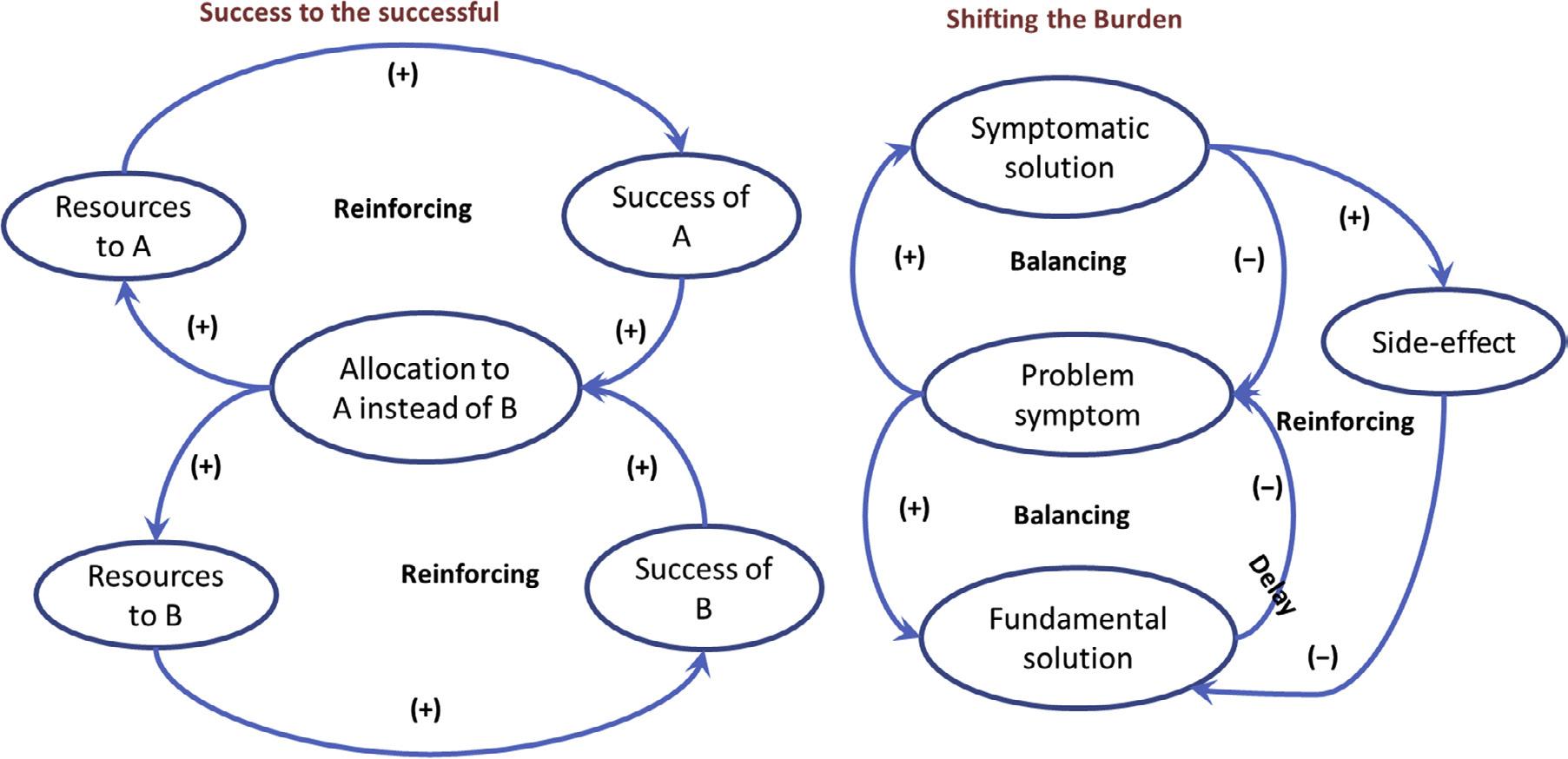
the gains by the successful beyond a certain point and leveling the field by removing some of the advantages of the successful or strengthening the weaker players and diversification are some of the strategies that can be used to mitigate the negative effects of this archetype. It must be noted that completely removing success as a basis for allocation of resources is also counterproductive as it leads to the elimination of incentives for any actor to compete and the mediocracy will rule. The system will then transition to drift to low-performance archetype in a race to the bottom.
7. Shifting the burden/addiction: this type of archetype occurs when a fundamental solution to a problem takes effect over a long time due to delays, but the symptomatic solution has no delay in improving problem symptom temporarily (Fig. 1.6). The symptomatic solution has a reinforcing loop of side effects which increase the system’s dependence on the symptomatic solution at the cost of the more sustainable fundamental solution. A very common example of such an archetype is the consumption of caffeine to combat low energy levels without paying any attention to longerterm more viable solutions such as more exercise and rest. This leads to an increasing dependence on caffeine to address increasingly severe symptoms of lower energy levels. Another example is the formulation biodiesel policies of the EU that lead to increasing biodiesel production in Malaysia and Indonesia resulting in the shifting of the environmental burden to these countries. The best way to avoid getting into this archetype is by strengthening the capacity of the system to handle the stresses. If already in the archetype, a good way to handle it is through a renewed focus on the fundamental solutions while slowly disincentivizing the symptomatic solutions.
Fig. 1.6 System archetypes: success to the successful and Shifting the burden (adapted from [5,9]).
8. Rule beating: this archetype refers to the evasive actions taken by mostly lower levels of system hierarchy to subvert the intent of the system rules while appearing to follow it in a letter. This happens in the lower level of system hierarchy as a response to the overly rigid, unworkable, and ill-defined rules formulated in a top-down manner. Examples of rule beating are the shift in the passenger behavior to carry larger cabin luggage in response to the changes in the airlines policies to charge for the check-in luggage. Implementing the rule more strictly will only serve to build greater resentment and subversion of the intent of the rule. The rules must be redesigned to actually achieve the purpose/intent of the rules than the mere appearance of adherence by the participants through a consultative rule-making process.
9. Seeking the wrong goal: the function/purpose of the system is one of the fundamental aspects of the system behavior. If the purpose of the system is not defined carefully to be in sync with intent of the system’s purpose, the system’s behavior will produce a results that align with the stated system purpose but not necessarily the intent of the systems function. For example, if the higher gross national product (GNP) of a country is the stated goal with policies will encourage higher GNP without necessarily increasing the comfort or happiness of people. It has been shown in many surveys that solely pursuing the higher GDP does not necessarily increase the happiness of the citizens. In a commendable move, the Government of Bhutan has switched to Gross National Happiness as the measure of development. Identifying goals that align with their underlying intent and being careful to ensure that means are not confused with results (higher GNP is one of the means to increase welfare and happiness of citizens) is critical to overcome the negative consequences of this archetype.
10. Accidental adversaries: the parts of the system start off in a reinforcing synergistic loop that improves the success of both parts of the system. However, some of the unintended activities of one of the parties can lead to reactions from the other party that turns the negative reinforcing loop of increasing animosity turning former partners into adversaries (Fig. 1.7). An example of the archetype in action is the tension between the customer-facing marketing section and the design engineering teams through the scope creep. Providing new information late into the design cycle by the marketing team causes additional efforts and deadline slippages for the engineering team which responds by putting design freezes. In future, the marketing team will front-load the design goals to beat the design freeze strategy of the engineering team leading to avoidable tension between collaborators. To avoid the negative consequences of such an archetype, clear communication of intent and actions without delays, revisiting the shared vision periodically, and strengthening the collaborations are some of the actions that can be taken by the actors in the system.
11. Growth and underinvestment: this archetype occurs when the successful growth is limited by the capacity limitations which could be eliminated/reduced if investments are made (Fig. 1.8). The process loop to augment the capacity have a delay in
Fig. 1.7 System archetypes: accidental adversaries (adapted from [5,9]).
Fig. 1.8 System archetypes: growth and underinvestment (adapted from [5,9]).

